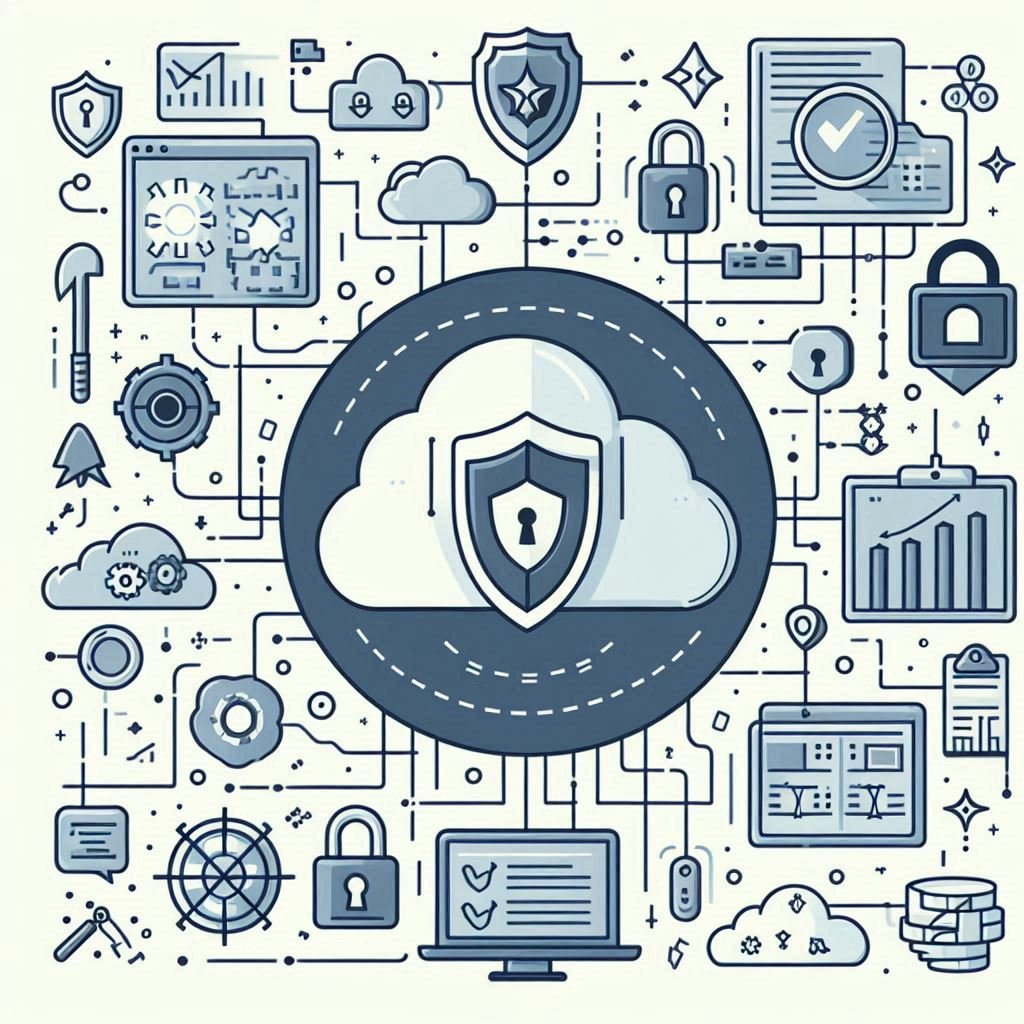Introduction: Cloud Security and SIEM in the UAE
As cloud computing continues to expand in the UAE, organizations are increasingly relying on its scalability and flexibility to improve productivity and efficiency. However, this shift comes with its own set of challenges, particularly in the area of cloud security. To safeguard digital assets and ensure business continuity, UAE businesses must implement robust cloud security measures, with a strong focus on Security Incident and Event Monitoring (SIEM) systems.
2. Understanding Cloud Security and SIEM
What is Cloud Security?
Cloud security encompasses the practices and technologies used to protect data, applications, and services in the cloud. Given the sensitivity of cloud-based information, maintaining a strong security posture is crucial for preventing data breaches and cyber-attacks.
What is SIEM?
Security Incident and Event Monitoring (SIEM) refers to the collection, analysis, and correlation of security log data across an organization’s IT infrastructure in real-time. It helps businesses identify potential threats and respond proactively before incidents escalate.
SIEM plays a key role in developing a cohesive cloud security strategy that combines both on-premises and cloud environments. Establishing a Security Operations Center (SOC) and deploying a SIEM solution can significantly enhance security by providing continuous monitoring of systems for potential threats.
3. The Need for a Security Operations Center (SOC) in Cloud Security
Having a dedicated SOC is crucial in today’s threat landscape. It serves as a centralized unit that continuously monitors, detects, and responds to security threats. The benefits of an SOC include:
3.1 Protecting Critical Assets
An SOC acts as the guardian of an organization’s most valuable assets. It provides a comprehensive view that enables informed decision-making for threat detection and incident response.
3.2 Real-time Threat Detection
With the right tools and processes, an SOC can deliver real-time alerts for suspicious activity. This allows organizations to respond swiftly to incidents.
3.3 Proactive Monitoring
Instead of reacting to security issues after they occur, an SOC enables organizations to engage in proactive monitoring. This reduces the risk of data breaches and enhances overall cloud security.
4. Key Functions of SIEM in Cloud Security
Implementing a SIEM solution offers various functionalities that enhance security management capabilities across an organization:
4.1 Centralized Log Management
SIEM solutions aggregate logs from multiple sources. This centralization simplifies the analysis and monitoring of security events.
4.2 Enhanced Threat Detection and Response
Through predefined security rules and behavior analysis, SIEM systems can identify potential attacks. This capability is crucial for preventing data breaches.
4.3 Incident Response Automation
When a security event is detected, SIEM solutions trigger alerts. These alerts guide incident response teams in their investigations.
4.4 Integration with Threat Intelligence
By integrating with external threat intelligence sources, SIEM solutions broaden their understanding of the threat landscape. This helps teams stay ahead of emerging threats.
5. Use Cases for SIEM in Cloud Security
Organizations benefit from implementing SIEM in various ways. Here are some common use cases:
5.1 Network Traffic Analysis
SIEM platforms can analyze incoming and outgoing network traffic. This helps identify unusual patterns that may indicate malicious activity.
5.2 User Behavior Analytics (UBA)
By monitoring user activities, SIEM solutions can detect anomalies. This enables security teams to respond swiftly to potential insider threats.
5.3 Compliance Auditing
SIEM platforms maintain compliance with regulatory requirements. Organizations can generate reports that demonstrate adherence to standards.
6. Building a Robust Cloud Security SIEM Strategy
Implementing a SIEM solution in the cloud involves several foundational steps:
6.1 Evaluating Security Needs
The first step is to understand the specific security needs of the organization. This includes determining which assets require monitoring.
6.2 Selecting the Right Technology
Many SIEM platforms are available, each offering different capabilities. It’s essential to choose a solution that aligns with the organization’s specific requirements.
6.3 Establishing Policies and Procedures
Documented security policies should govern how security incidents are managed. This includes how logs are collected and analyzed.
6.4 Continuous Improvement
Security requires ongoing monitoring and iterative improvements. Regular reviews and updates to the SIEM deployment ensure adaptability and effectiveness.
7. Leveraging Cloud Solutions for Enhanced Security
Cloud platforms offer unique advantages for securing infrastructure, especially when combined with SIEM. Some of these features include:
7.1 Automated Log Collection
Cloud services often provide built-in capabilities to automatically generate and collect logs. This simplifies the process of aggregating data for analysis.
7.2 Scalability
As organizations grow, their security demands evolve. Cloud-based SIEM solutions offer scalability to handle increased log volumes.
7.3 Multi-Account Management
For organizations using multiple cloud environments, a centralized SIEM solution streamlines the management of security events.
8. Embracing a Culture of Security in Cloud Environments
Creating a strong security culture is just as important as implementing technological solutions. Regular employee training and awareness about best security practices help foster a more resilient organization, reducing the chances of internal vulnerabilities.
9. The Road Ahead for Cloud Security in the UAE
As technology evolves, so do the tactics used by cybercriminals. Organizations in the UAE must stay ahead by continuously monitoring new threats and adapting their security strategies. The future of cloud security will likely involve more advanced threat detection, automation, and proactive measures.
Conclusion
To navigate the evolving cloud security landscape, organizations in the UAE must adopt a proactive approach. Deploying SIEM and establishing a SOC enhances threat detection, incident response, and compliance. Additionally, App and Platform Security is crucial in protecting sensitive data from cyber threats.
By integrating robust security measures and fostering a security-first culture, businesses can safeguard their cloud environments and stay ahead of emerging risks.
Do you like to read more educational content? Read our blogs at Cloudastra Technologies or contact us for business enquiry at Cloudastra Contact Us.
